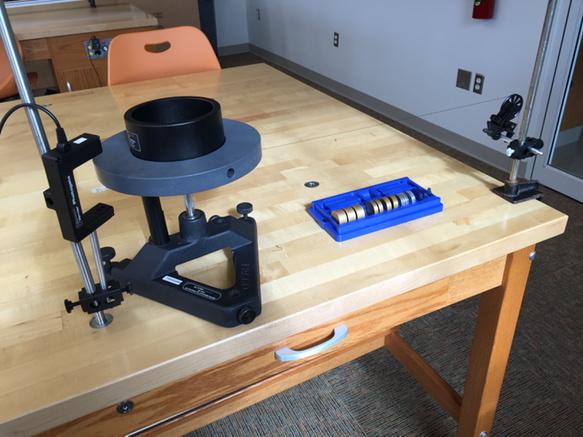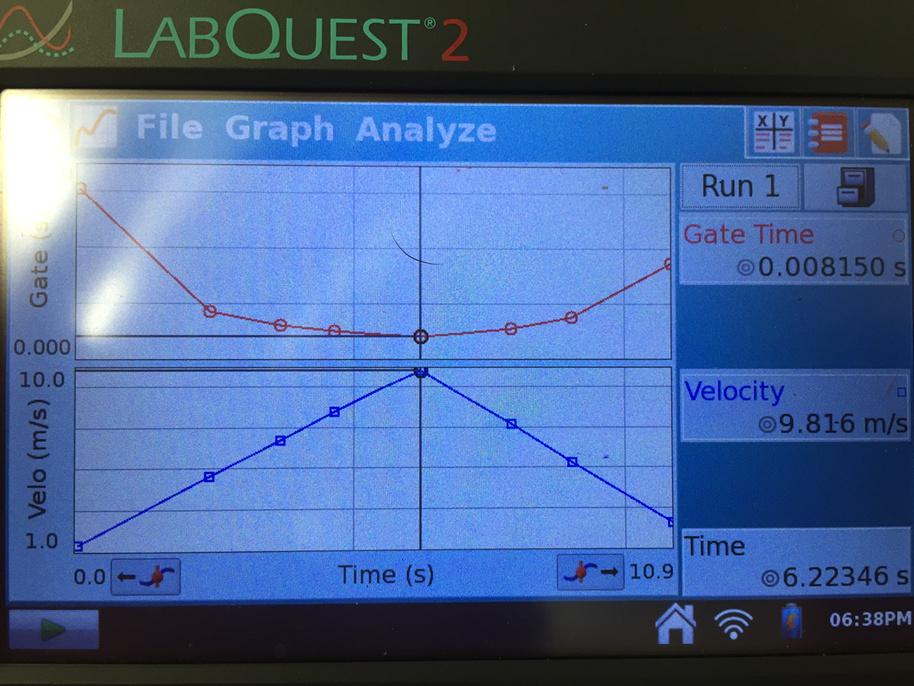I was asked via email how I've dealt with waves in AP Physics 1. Remember, my approach will change over the years, as I see the sorts of things asked on the exam, and as I get new ideas from shop talk. For now, I've started by teaching AP Physics B waves, with a bit more detail about how standing waves are formed, and no credit for just mimicking the equations fn=nv/2L etc. In order to develop a deeper understanding of standing waves, I tried two new labs this year:
(1) I used the pasco wave generator at the constant 60 Hz frequency attached to a long string. The string was attached over a pulley, with a hanging mass providing a tension. I had students change the tension (which changes the wave speed), and measure the wavelength of the resulting standing wave from node-to-node-to-node.
So we didn't spend years pounding the calculator, I provided a lookup table mapping each hanging mass to the correct wave speed. I used excel ahead of time with the linear density of the string that I measured and the equation v = root ((tension) / (linear density)). This graph is linear; the slope was 60 Hz, which was the frequency of the generator. Each group matched the 60 Hz frequency within their determined uncertainty.
The real pedagogical purpose of this experiment was to give students kinesthetic experience with standing waves. I did not introduce harmonics to the class before this experiment! We only discussed how standing waves are the result of interference between periodic waves traveling in opposite directions in a fixed space; and I showed them that the wavelength was twice the size of one "hump." They found out for themselves that sometimes these standing waves didn't form -- they had to move the generator left and right to adjust the string length in order to get the standing waves to show up. That was a nice transition into harmonics, and to the next experiment.
(2) I used adjustable-length pipes, open at both ends, with an iphone frequency generator to produce resonance in the tubes. Each group plotted their pipe length at resonance vs. the frequency of the generator, changing the freqency in small increments so as to remain at the same harmonic. Each group was then asked to make a linear plot from which the harmonic number that they used could be determined.
Since we did this experiment after the one described above, it reinforced the condition under which standing waves occur. When on subsequent homework a student was confused about standing waves questions, I explained in terms of these two experiments -- the pipe didn't resonate except at one or two special lengths, just like the string didn't show the humps unless you got the string length just right. And just as you could lengthen the string by exactly one hump and get standing waves again without changing the frequency, you could lengthen the pipe for the same frequency and get another resonance. How far would you need to lengthen the pipe? One "hump" in the standing wave, i.e. 1/2 wavelength.
Now, there's more to be done, of course, but this is where I started. In Physics B I might have done the first of these labs; I have more time in the new course, so I added the second.
As for homework or test questions to ask... check out the experimental question from the 2012 Physics B exam. It proposes a similar experiment to number 2 above, but asks for a determination of the speed of sound. That's a good follow-up a couple of weeks after the waves unit.







